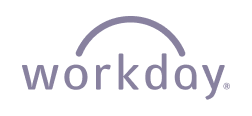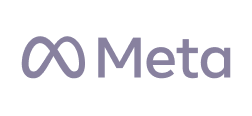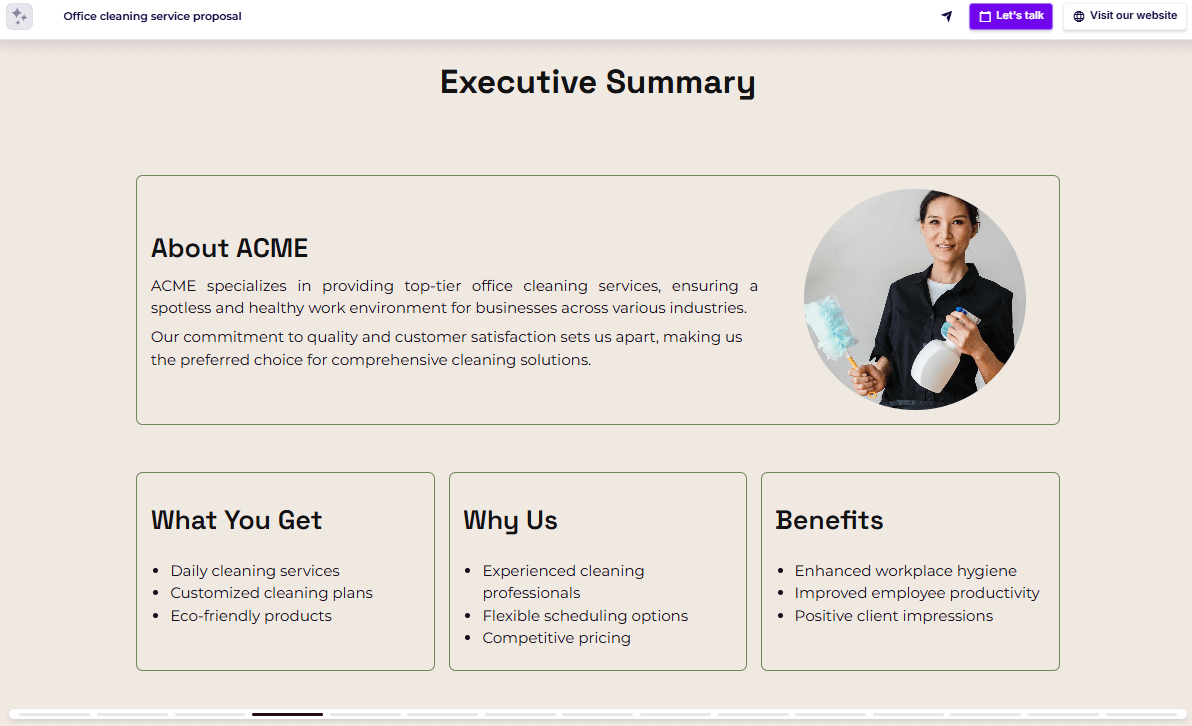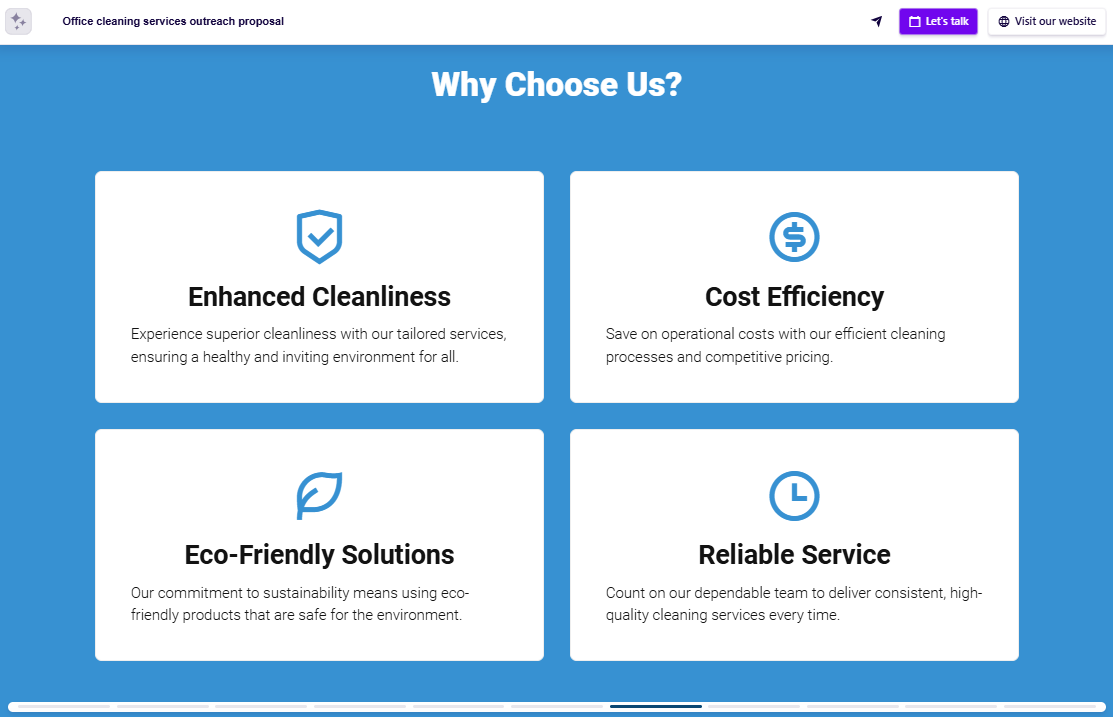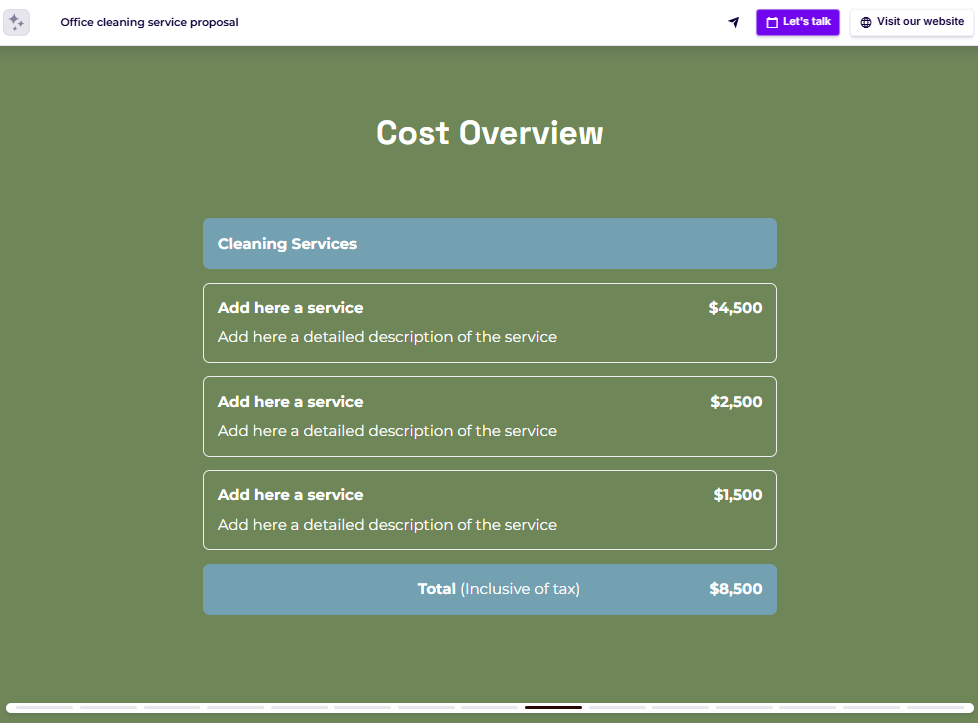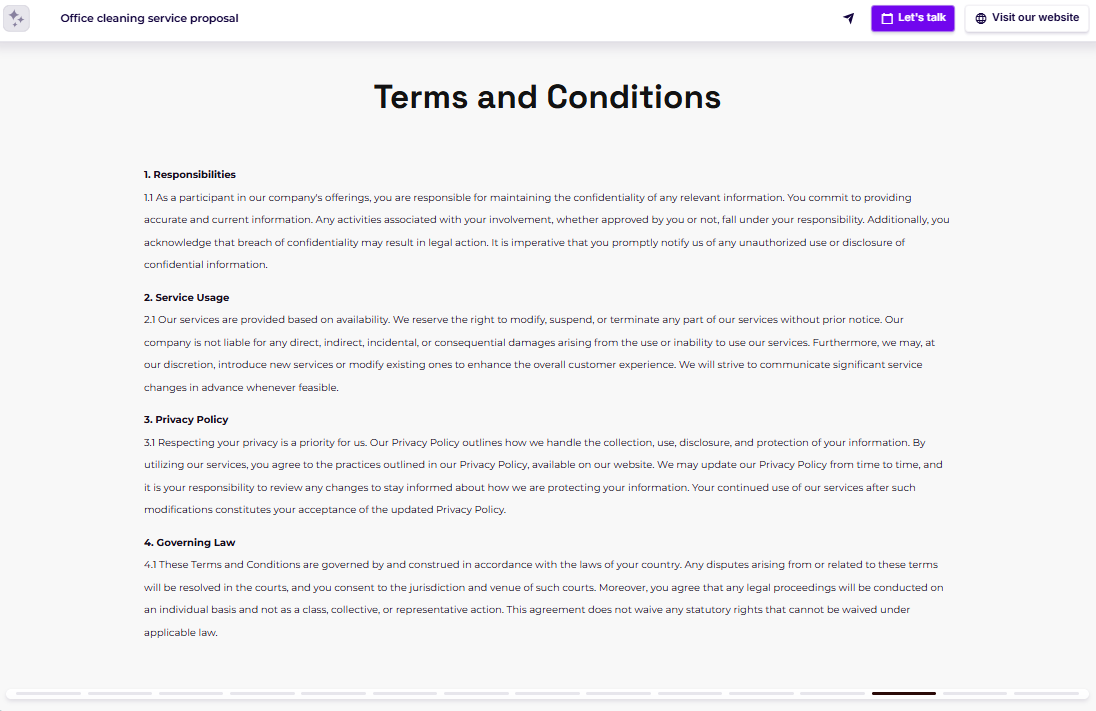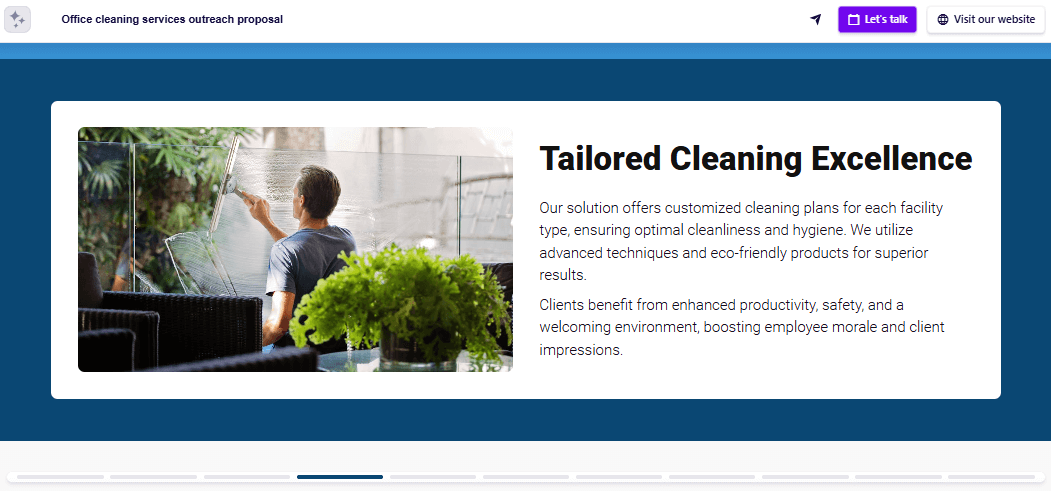Powered by

Learn how to write a sales proposal that seals the deal, with tips on sales proposal format. Use our customizable templates for your sales proposal design.
Short answer
A sales proposal is a tailored document designed to persuade potential clients to choose your service, product, or project. It outlines their problem, your solution, and the value you bring.
A well-made proposal turns interest into action, showing why you’re the best choice.
Looking for specific use cases? We’ve got dedicated guides for that:
There’s no such thing as a one-size-fits-all sales proposal—there are multiple kinds, but the main 3 use cases are sales proposals for services, products, and projects.
Service proposals offer solutions for ongoing needs like consulting or bookkeeping, focusing on expertise and measurable outcomes.
Product proposals are created to sell tangible items or software, explaining how their features and benefits solve specific problems.
Project proposals outline one-time undertakings, such as events or construction, detailing plans, timelines, and deliverables.
Each type requires a tailored approach to prove you’re the right choice for the job.
You should use a sales proposal when you need to win over a client, whether you’re reaching out proactively or responding to a formal request.
Unsolicited proposals are sent cold to prospects, demonstrating that you understand their challenges and offering tailored solutions designed to capture their interest. These are perfect for sparking interest and opening doors.
Solicited proposals, like RFP responses, are more formal, structured documents that meet specific requirements laid out by the client. They’re used when the client is actively seeking a solution and expects detailed, competitive offers.
Stop losing opportunities to ineffective presentations.
Your new amazing deck is one click away!


